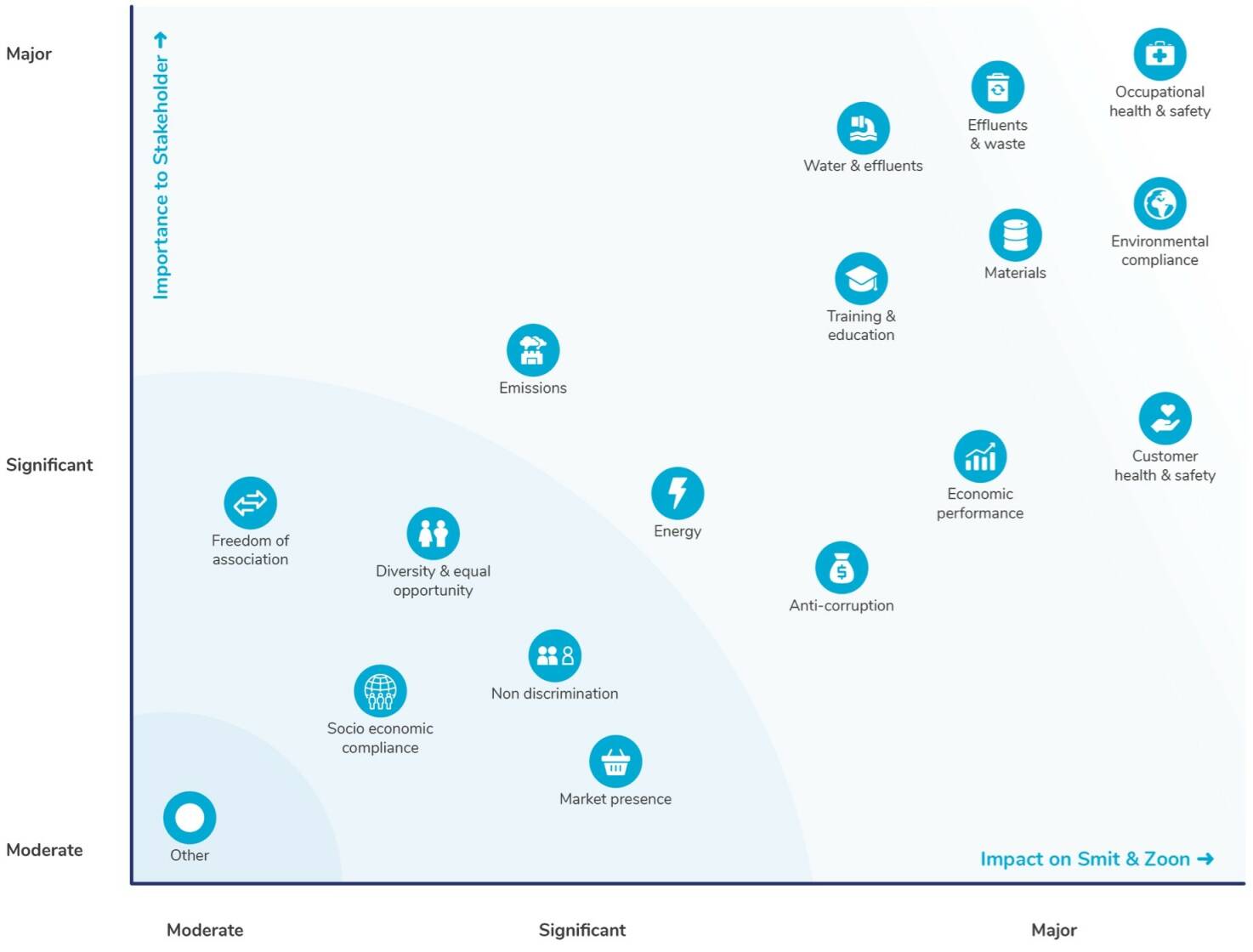ESG Landscape
As a company, we are committed to creating a socially and environmentally sustainable leather value chain, putting sustainability at the heart of what we do. All the elements that add up to our ESG report can be aggregated and condensed into this one motto: Creating Sustainable Leather Together. We strongly believe that taking responsibility for the future of leather is the only way to create a business that is successful for the company and its shareholders, for the industry, for our employees, for our customers, and for society. Adherence to major international standards and principles and acting on our most material impacts shape our ESG landscape and are fundamental to our strategy and ESG approach.
We keep the United Nations’ 17 Sustainable Development Goals (UN SDGs) and the universal declaration of human rights close to our business decisions, and we have voluntarily joined the standards and principles of societal institutes like the International Labor Organization (ILO), ZDHC, LWG, SLF, LIA, TEGEWA, MVO Nederland, EcoVadis (Royal Smit & Zoon is GOLD rated), and ISO. We respect international laws and regulations, specific client requirements, the Declaration on Fundamental Principles and Rights of Work, and the Ethical Trading Initiative base code, and use the GRI Standards as the reporting guideline whenever we can. Our ESG Policy lays out the principles that guide us in everything we do to help us achieve our mission.
We support all 17 UN SDGs, but have identified five UN SDGs that we concretely contribute to. These five UN SDGs are at the heart of our company’s strategy and contribute to the rest of the SDGs as well. Throughout this report, we will display the UN SDG symbols that connect to the specific topic.
Five UN SDG goals
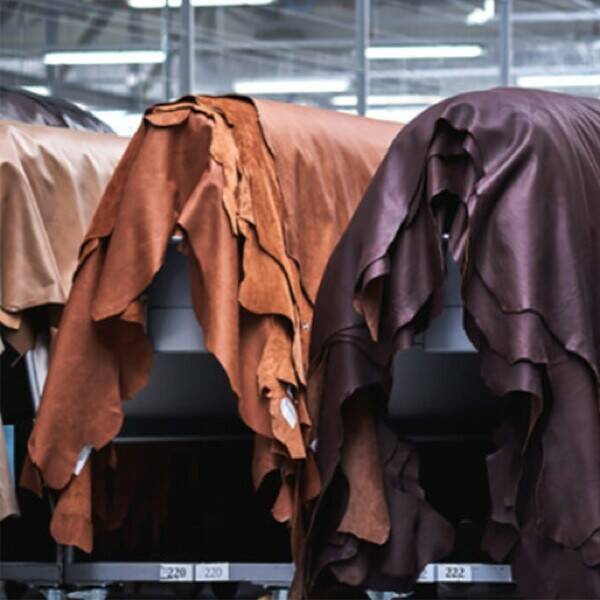
The leather industry is consuming and emitting large amounts of water, that’s why we encourage and support leather manufacturers to reduce water consumption and improve water quality. This goal can be reached by reducing pollution, minimizing the release of hazardous chemicals, increasing water recycling, safe reuse of water, and reduction of water consumption.

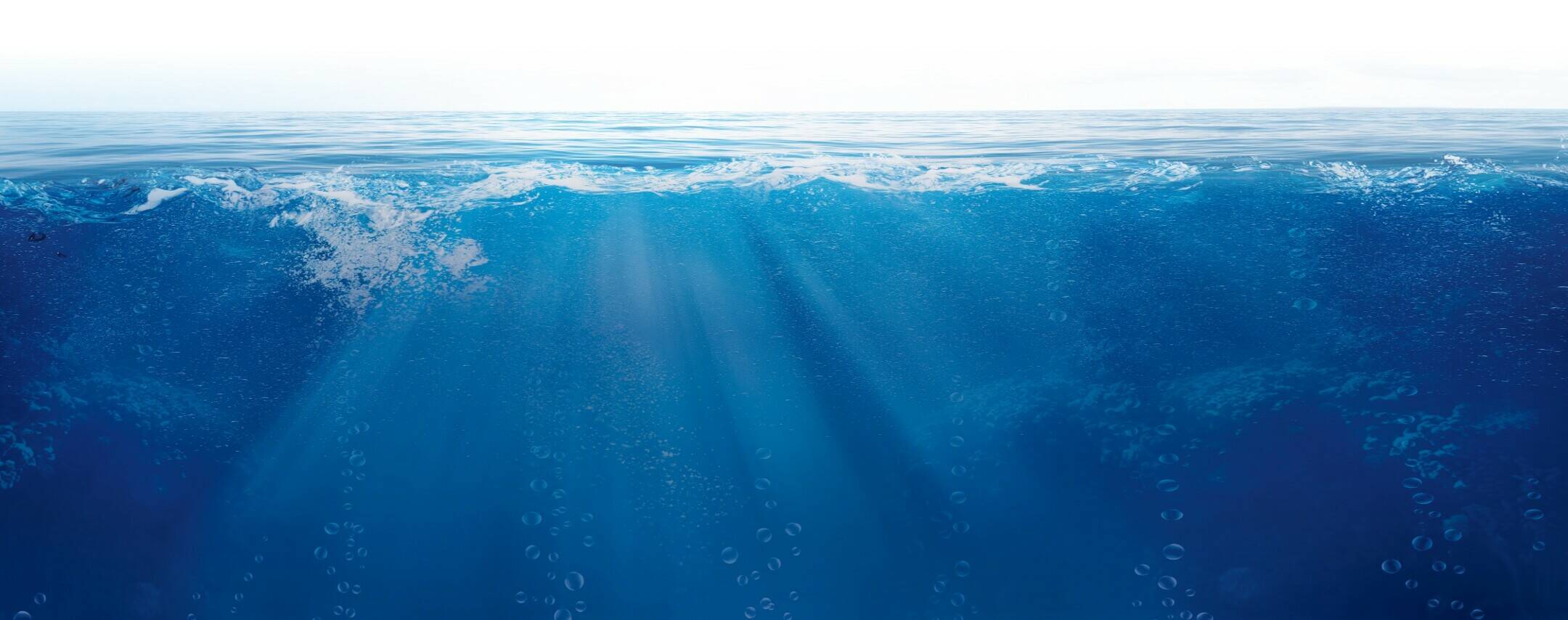
Leather is produced globally in countries with a wide variety of economic and societal circumstances. The leather industry has the potential to employ large amounts of people and thus increase prosperity for nations and all the people involved. We support this by introducing innovative technologies & processes that will provide decent work conditions and a good social environment. Training and education to work safely with chemicals are essential to this development.
















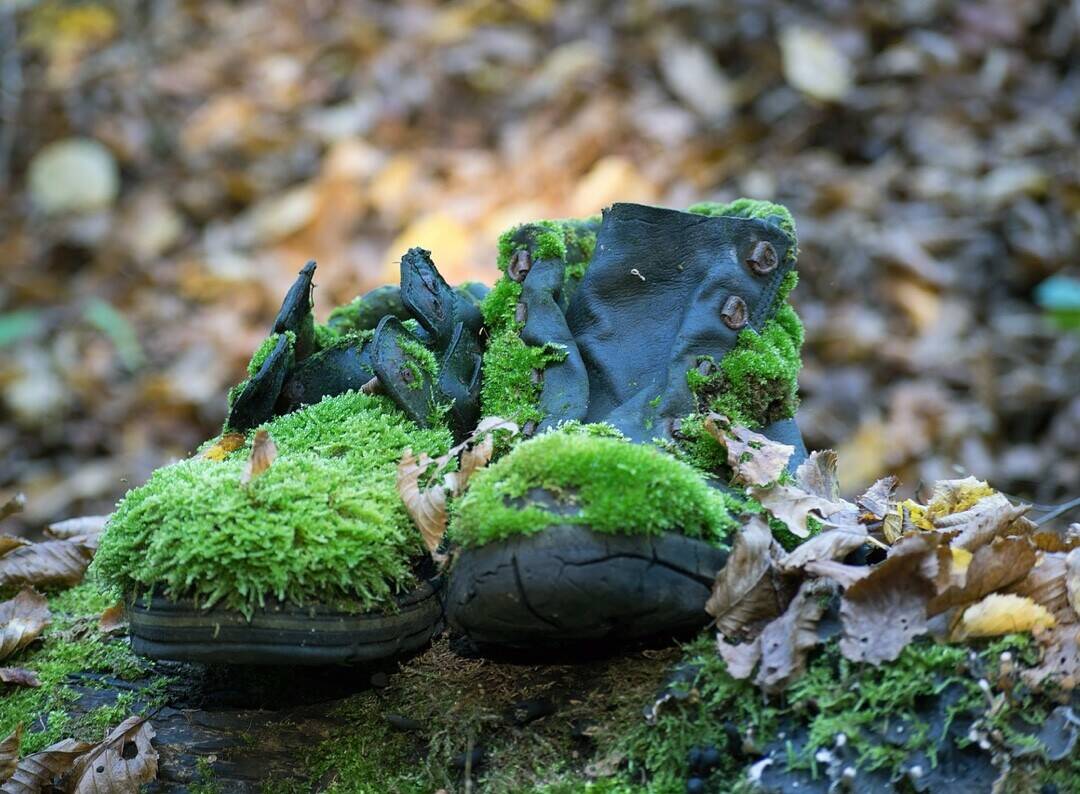
Circularity is the principle that drives our Research & Development and our procurement practices. This helps us to create a product portfolio that is mainly built from renewable resources and will support creating a responsible end-of-life for leather. Our products are developed to have the least possible emissions to minimize the adverse impacts on human health and the environment.

Climate change is affecting every country on every continent. It is disrupting national economies and the food system we depend on, and is affecting lives. Weather patterns are changing, sea levels are rising, and weather events are becoming more extreme. This is why we will keep on focusing on reducing the greenhouse gas emissions in our premises, positively influencing these in our supply chain, and offsetting our footprint.



We believe in the ‘Power of Partnerships’ and that a positive impact can only be created through collaborations. Therefore, we support the leading leather industry organizations to speed up the process of creating a socially and environmentally sustainable leather value chain. We are open to collaborations to share our knowledge, expertise, technology, and financial resources.


The Materiality of our Operation and our Strategy
The identification of economic, environmental, and social impact takes place through continuous dialogue with key stakeholders in the leather supply chain, active participation in industry organizations, and cooperation in important value chain initiatives. In the appendices, you will find more detailed reporting on stakeholder engagement activities and the identification of key risks, impacts, and opportunities.
Together, it is the fundament of our Materiality Matrix. The infographic on this page captures the topics identified as being most material to the company and our stakeholders. It shows the impact a topic has on us (horizontal axis) and its importance to our stakeholders (vertical axis). Our approach to reporting and materiality is based on internationally recognized guidelines, like the Global Reporting Initiative (GRI). The eleven topics at the top right are particularly important, both to our stakeholders and to us.
Our ESG Roadmap 2025 describes the commitments to our stakeholders and addresses our most material economic, environmental and social impacts. It includes KPIs to manage and continuously improve on these impacts. The main sections of this Report (E, S, and G) are therefore based on our ESG Roadmap 2025 commitments and indicate, per section, which material topics are covered. ‘Facts & Figures’ provides additional information and data on the progress of long-term goals related to our material topics. The material topics are also translated into operational and strategic initiatives via the regular management processes with intense engagement from the Management Board and the Supervisory Board.


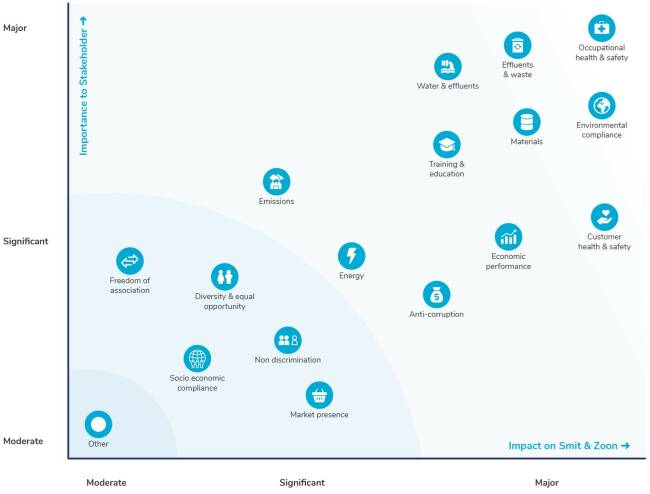
The Materiality of our Operation and our Strategy
The identification of economic, environmental, and social impact takes place through continuous dialogue with key stakeholders in the leather supply chain, active participation in industry organizations, and cooperation in important value chain initiatives. In the appendices, you will find more detailed reporting on stakeholder engagement activities and the identification of key risks, impacts, and opportunities.
Together, it is the fundament of our Materiality Matrix. The infographic on this page captures the topics identified as being most material to the company and our stakeholders. It shows the impact a topic has on us (horizontal axis) and its importance to our stakeholders (vertical axis). Our approach to reporting and materiality is based on internationally recognized guidelines, like the Global Reporting Initiative (GRI). The eleven topics at the top right are particularly important, both to our stakeholders and to us.
Our ESG Roadmap 2025 describes the commitments to our stakeholders and addresses our most material economic, environmental and social impacts. It includes KPIs to manage and continuously improve on these impacts. The main sections of this Report (E, S, and G) are therefore based on our ESG Roadmap 2025 commitments and indicate, per section, which material topics are covered. ‘Facts & Figures’ provides additional information and data on the progress of long-term goals related to our material topics. The material topics are also translated into operational and strategic initiatives via the regular management processes with intense engagement from the Management Board and the Supervisory Board.
We believe in the ‘Power of Partnerships’ and that a positive impact can only be created through collaborations. Therefore, we support the leading leather industry organizations to speed up the process of creating a socially and environmentally sustainable leather value chain. We are open to collaborations to share our knowledge, expertise, technology, and financial resources.


Climate change is affecting every country on every continent. It is disrupting national economies and the food system we depend on, and is affecting lives. Weather patterns are changing, sea levels are rising, and weather events are becoming more extreme. This is why we will keep on focusing on reducing the greenhouse gas emissions in our premises, positively influencing these in our supply chain, and offsetting our footprint.



Leather is produced globally in countries with a wide variety of economic and societal circumstances. The leather industry has the potential to employ large amounts of people and thus increase prosperity for nations and all the people involved. We support this by introducing innovative technologies & processes that will provide decent work conditions and a good social environment. Training and education to work safely with chemicals are essential to this development.









The leather industry is consuming and emitting large amounts of water, that’s why we encourage and support leather manufacturers to reduce water consumption and improve water quality. This goal can be reached by reducing pollution, minimizing the release of hazardous chemicals, increasing water recycling, safe reuse of water, and reduction of water consumption.

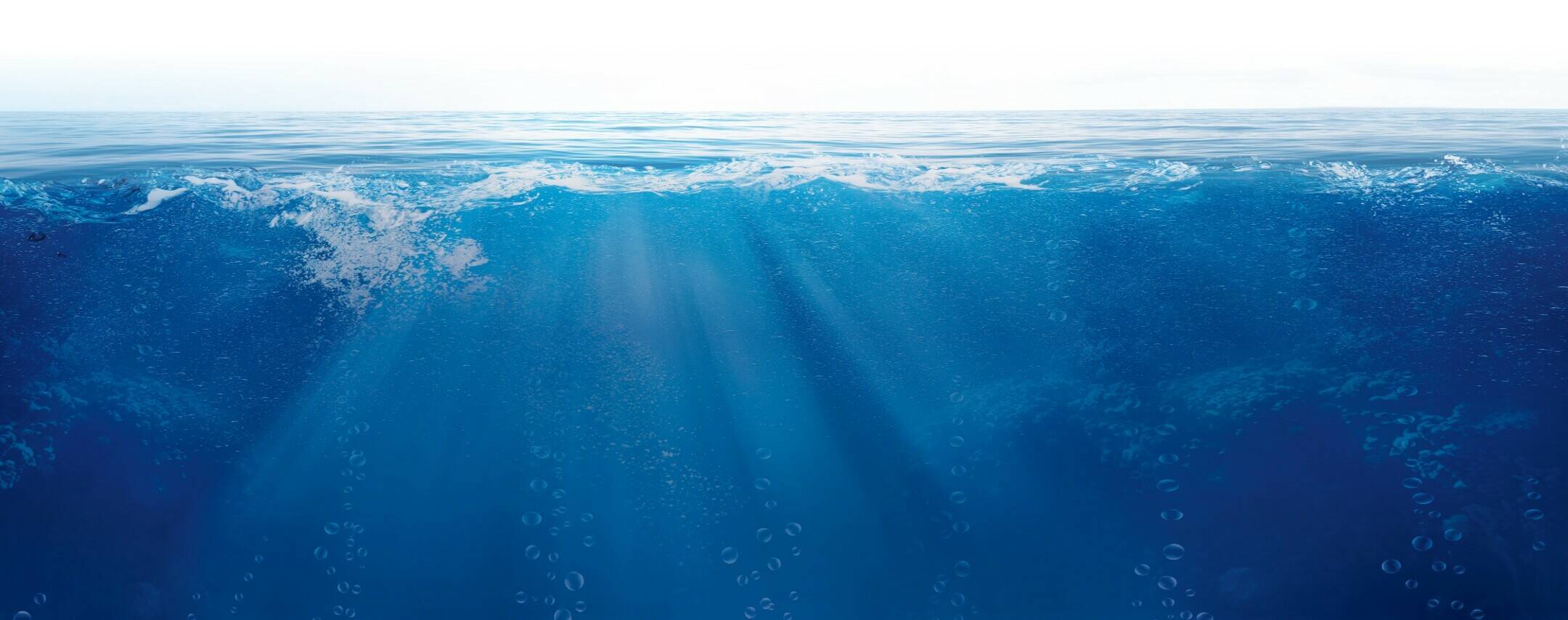
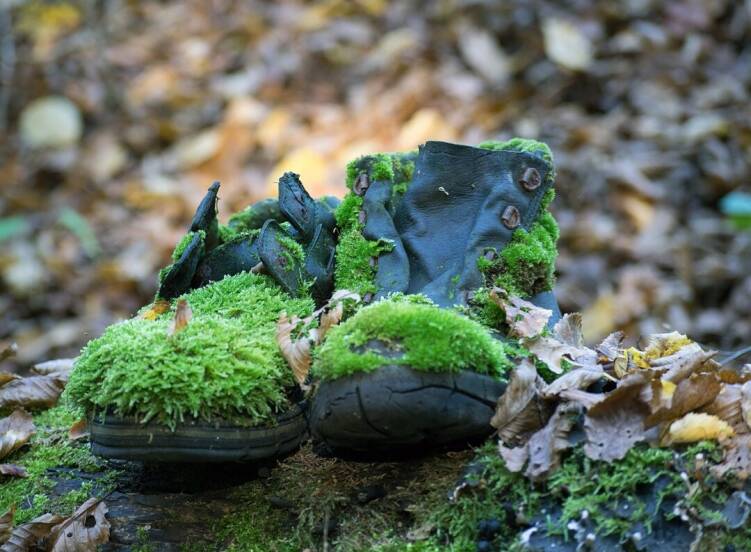
Circularity is the principle that drives our Research & Development and our procurement practices. This helps us to create a product portfolio that is mainly built from renewable resources and will support creating a responsible end-of-life for leather. Our products are developed to have the least possible emissions to minimize the adverse impacts on human health and the environment.


We support all 17 UN SDGs, but have identified five UN SDGs that we concretely contribute to. These five UN SDGs are at the heart of our company’s strategy and contribute to the rest of the SDGs as well. Throughout this report, we will display the UN SDG symbols that connect to the specific topic.
Five UN SDG goals
We keep the United Nations’ 17 Sustainable Development Goals (UN SDGs) and the universal declaration of human rights close to our business decisions, and we have voluntarily joined the standards and principles of societal institutes like the International Labor Organization (ILO), ZDHC, LWG, SLF, LIA, TEGEWA, MVO Nederland, EcoVadis (Royal Smit & Zoon is GOLD rated), and ISO. We respect international laws and regulations, specific client requirements, the Declaration on Fundamental Principles and Rights of Work, and the Ethical Trading Initiative base code, and use the GRI Standards as the reporting guideline whenever we can. Our ESG Policy lays out the principles that guide us in everything we do to help us achieve our mission.

As a company, we are committed to creating a socially and environmentally sustainable leather value chain, putting sustainability at the heart of what we do. All the elements that add up to our ESG report can be aggregated and condensed into this one motto: Creating Sustainable Leather Together. We strongly believe that taking responsibility for the future of leather is the only way to create a business that is successful for the company and its shareholders, for the industry, for our employees, for our customers, and for society. Adherence to major international standards and principles and acting on our most material impacts shape our ESG landscape and are fundamental to our strategy and ESG approach.

